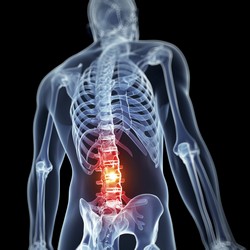Hypoxia and intervertebral disc pathologies
Lower back pain affects 80 % of the general population, representing one of the foremost socioeconomic burdens faced by industrialised countries. The underlying IVD degeneration and progressive disappearance of the nucleus pulposus (NP) structure are subjects of current research. Within the IVD, the progenitor cells are exposed to low oxygen, or hypoxia. Adaptation to hypoxia is a critical developmental event, controlled by a variety of cellular functions. The EU-funded DISKOMICE(opens in new window) (Diskomice) project investigated the role of hypoxia-inducible factors (HIFs) in the development of IVD and cartilaginous growth plate. The four-year study was dedicated to the molecular mechanisms of proliferation, survival and differentiation of NP cells during developmental and degenerative processes. Scientists developed genetically modified mice to specifically inactivate HIF genes during embryonic development, growth and ageing. DISKOMICE demonstrated that the von Hippel-Lindau protein is a critical regulator of bone morphogenesis. The loss of this enzyme, normally targeting HIFs to the proteasome for degradation, considerably altered the size, shape and overall development of the skeletal elements. It also caused the structural collapse of the cartilaginous growth plate as a result of impaired proliferation. The resulting phenotype was associated with a delayed replacement of cartilage by bone. The loss of HIF-1 caused the progressive disappearance and replacement of the NP with a novel tissue resembling fibrocartilage. Mutant NP cells underwent massive cell death and were completely replaced by a different cell lineage. Biomechanical testing of mutant IVD allowed evaluation of the functional consequences of HIF-1 deletion in the NP. It showed that the loss of the NP in mutant mice significantly reduced the IVD biomechanical properties by decreasing its ability to absorb mechanical stress. Mouse models developed by DISKOMICE mimicked the IVD degeneration occurring in humans with a progressive disappearance of the NP structure. This mouse model therefore represents a valuable tool for developing new cell-based tissue repair strategies and identifying new molecular targets. Thus, DISKOMICE results will help to make Europe a leader in the field of regenerative medicine.







